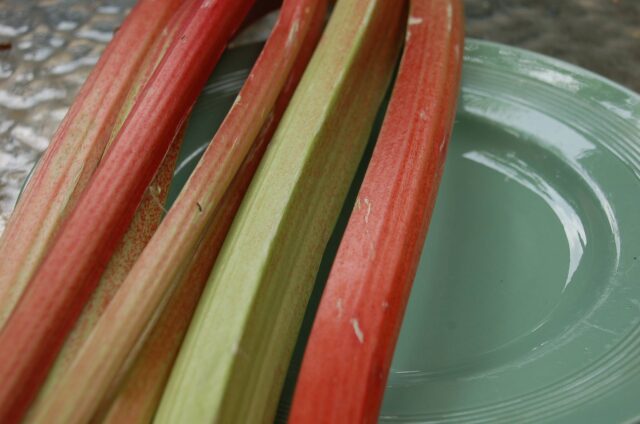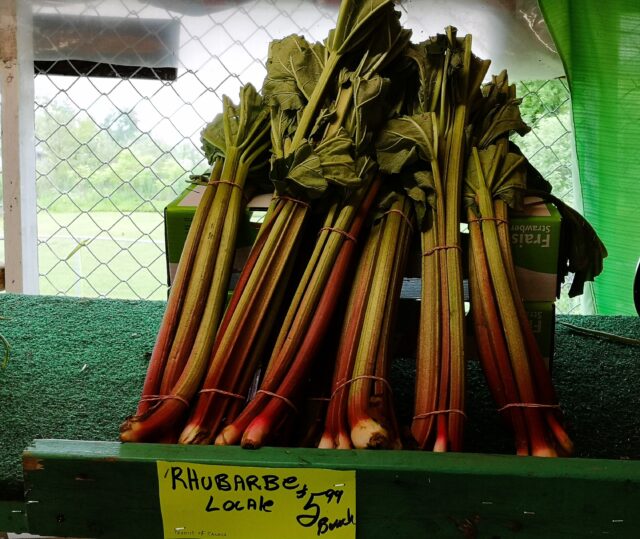Rhubarb for sweet or savoury

During a quick trip across the river to Thurso and Ripon, Quebec, I spotted a few batches of rhubarb in small markets. It’s a fruit (or is it a vegetable?) I often forget is out there at this time of the year.
The crop grows plentifully across the country, but some of the best stalks are coming out of the fields as we speak – and for a short time only.
Take advantage when you find it at local farm stands or in select grocery stores.
Whether it’s a fruit or a vegetable is perhaps up for culinary debate, but that the debate exists at all is an indication of the plant’s polarizing nature: some people love the tart quality of this harbinger of early summer; others dislike it intensely.
Outdoor varieties of rhubarb – which is often given away by the large broad and distinctive leaves you can spot growing in gardens – include Valentine, McDonald and German Wine varieties.

It’s also a plant whose winter varieties – Victoria or Sutton – are “forced” to grow by planting shoots in the fall in a darkened environment inside until buds are produced. It is said that such treatment makes for sweeter rhubarb.
Rhubarb has a rich culinary history, and although it is used in many desserts, it is a vegetable, botanically speaking: it’s a perennial herb that originated in the temperate regions of Eurasia and has been a part of cookery, including North American cookery, for hundreds of years.
It likely originally came from Mongolia growing alongside the river banks of what is now the Volga River (and what was once known as the Rha).
Eventually it made its way into ancient Roman hands, and they called it “rha barbarum” – the Romans, according to culinary historian Mark Morton, presumed that anything that came from outside their empire was “barbaric.”
This may explain the historical origin of a slang term that, in the 1930s in the favourite summer sport, baseball, described an old timey nasty shouting match and rowdy, aggressive altercation as a “rhubarb.”
For more, visit Andre Paquette Editions.

